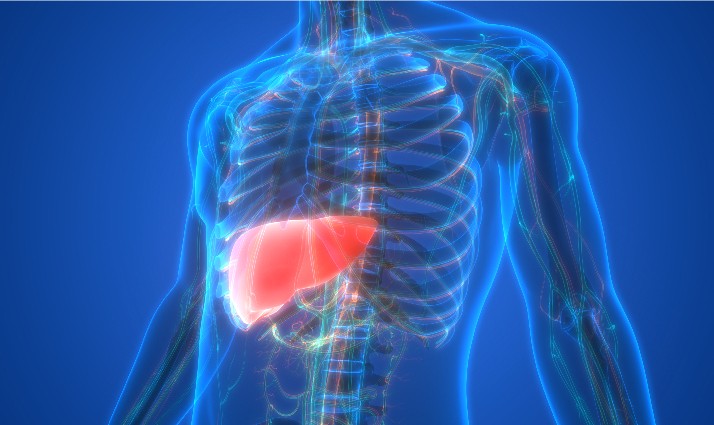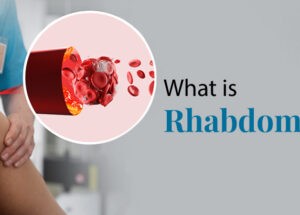Liver Biopsy: Everything You Need to Know
August 12, 2019

A liver biopsy is a procedure that involves taking a small sample of tissue from your liver. The procedure is most commonly used to diagnose and monitor certain conditions, including liver cancer, cirrhosis, metabolic disorders or hepatitis.
During this procedure, the area under the ribs is cleaned and local anaesthetic is then injected into the skin and tissues just over a part of the liver (usually between two lower ribs on the right-hand side). A special hollow needle is then pushed through the skin into the liver. Patients are requested to hold their breath for 5-10 seconds when the needle is quickly inserted, as this helps the liver move slightly and brings out a small sample of liver tissue along with the needle.
Doctors at Rela Hospital, one of the most sought-after liver biopsy centres in Chennai, may use a computerised tomography (CT) scan for guidance during the biopsy. The scan locates the exact site of the liver so the biopsy needle is inserted at exactly the right place. The scan is painless.
In case of some patients whose liver’s ability to produce substances that help blood clot has been compromised, the above-mentioned method does not work, as there is high risk of bleeding after the biopsy. In such cases, doctors use a different procedure, which usually involves inserting a very thin, hollow tube (a catheter) into a vein in your neck or groin. The skin will be made numb by a local anaesthetic before the procedure. The catheter is then gently guided to the veins inside your liver. A small needle on the tip of the catheter makes a tiny hole in the wall of the vein. The needle collects a sample of liver tissue which is then retained in the catheter as it is taken out of your body.
Alternatively, doctors can also perform liver biopsy via an endoscopic ultrasound scan using an endoscope with an ultrasound probe attached to create detailed pictures of internal organs and structures. This is a new technique which is not available in all hospitals.
Complications are very uncommon in all the above-mentioned procedures. Usually, minor pain and discomfort is alleviated with painkillers.
Patients are requested to seek medical advice if:
- There is bleeding from the biopsy site or the site looks inflamed.
- Patient experiences fever.
- The biopsy site is still painful three days later or if painkillers do not help.
Understanding the Liver Biopsy Procedure
Understanding the liver biopsy procedure is essential for individuals undergoing this medical test. It’s a method used to gather a small sample of liver tissue crucial for diagnosing various liver conditions assessing the extent of damage and guiding treatment decisions. The process involves inserting a needle through the skin and into the liver to collect a tiny tissue sample.
After collecting the sample, a pathologist carefully looks at it to find any problems like swelling, scarring, or cancer cells. Though liver biopsy is usually safe, there are dangers like bleeding and infection. Still, it’s super important for doctors to figure out liver issues and make treatment plans that fit each person.
Explaining the importance of liver biopsy in diagnosing liver diseases
Accurate Diagnosis: Liver biopsy provides direct access to liver tissue allowing for a precise diagnosis of the underlying liver condition. Unlike imaging techniques such as ultrasound, MRI or CT scans which provide indirect evidence of liver damage biopsy allows for the examination of the liver tissue itself providing detailed information about the extent and nature of the disease.
Differentiation of Liver Diseases: Many liver diseases present with similar symptoms making it challenging to differentiate between them based solely on clinical presentation or imaging studies. Liver biopsy enables pathologists to distinguish between various liver diseases such as hepatitis, cirrhosis, fatty liver disease, autoimmune liver diseases and liver cancer based on specific histological features observed in the liver tissue samples.
Assessment of Disease Severity: Liver biopsy helps in assessing the severity and stage of liver diseases. This information is crucial for determining the appropriate treatment strategies and predicting disease progression. For example, in patients with chronic hepatitis B or C liver biopsy can determine the degree of liver inflammation, fibrosis and cirrhosis guiding decisions regarding antiviral therapy or the need for liver transplantation.
Evaluation of Treatment Response: Liver biopsy is essential for monitoring the response to treatment in patients with liver diseases. By periodically performing biopsies healthcare providers can assess changes in liver pathology such as reductions in inflammation, fibrosis regression or tumor response to therapy. This information helps in adjusting treatment regimens and predicting long-term outcomes.
Identification of Complications: Liver biopsy can detect complications associated with liver diseases such as the presence of liver fibrosis, cirrhosis, portal hypertension and liver cancer. Early detection of these complications allows for timely interventions to prevent disease progression and improve patient outcomes.
There Are Four Different Techniques for Liver Biopsy
- Percutaneous
- Transjugular
- Laparoscopic
- Fine-Needle Aspiration (FNA) Biopsy
1. Percutaneous:
Imagine a tiny key unlocking the door to understanding your liver’s health. That’s what a percutaneous liver biopsy is all about. During this procedure a healthcare professional carefully inserts a thin needle through your skin and into your liver to collect a small tissue sample.
This sample acts as a window allowing experts to examine it under a microscope and gain valuable insights. This is a common approach to diagnose various liver conditions such as hepatitis or liver cancer.
While You might experience some temporary discomfort or bruising at the biopsy site the information gleaned from this procedure can be crucial in guiding your healthcare journey and managing your liver health effectively.
2. Transjugular:
Transjugular liver biopsy is often used in situations where a traditional percutaneous liver biopsy might be risky such as when a person has clotting disorders or a buildup of fluid in the stomach. It can also be helpful when the liver is difficult to access due to obesity or other factors.
After the biopsy you may need to lie flat for a few hours to prevent bleeding from the biopsy site. The tissue samples collected during the procedure are then sent to a laboratory for analysis to help diagnose liver conditions and guide treatment decisions.
3. Laparoscopic:
Laparoscopic liver biopsy is an advanced medical procedure utilised to extract small tissue samples from the liver for diagnostic purposes. Unlike traditional open surgery, laparoscopic liver biopsy is minimally invasive, involving only small incisions in the abdomen rather than a large surgical opening.
Once the liver is located, small tissue samples are extracted using biopsy forceps or a cutting device attached to the laparoscope. These samples are carefully collected from different areas of the liver to provide a comprehensive understanding of its health and any underlying conditions.
4. Fine-Needle Aspiration:
Fine-needle aspiration (FNA) liver biopsy is a specialised diagnostic procedure used to sample liver tissue for analysis. Unlike traditional liver biopsy techniques that involve extracting a small piece of tissue, FNA biopsy uses a thin needle to aspirate (draw out) cells or tissue fragments from the liver mass or lesion of interest.
FNA liver biopsy is particularly useful in cases where there is a suspicion of liver tumours or lesions, as it allows for the collection of cells or tissue directly from the abnormal area. This can help differentiate between benign and malignant lesions and provide important information for diagnosis and treatment planning.
Interpreting Liver Biopsy Results:
Interpreting liver biopsy results can be a nerve-wracking experience but it’s a crucial step in understanding what’s happening inside your body. When you receive the results it’s natural to feel a mix of emotions – anxiety confusion maybe even relief if they provide clarity on your health situation. These results paint a picture of the state of your liver revealing important details about inflammation, scarring and fatty deposits even the presence of abnormal cells.
Each piece of information is like a clue in a detective story helping your healthcare team piece together the puzzle of your liver health. It’s not always easy to decipher these findings on your own which is why it’s essential to rely on the expertise of medical professionals who can provide context and guidance.
Conclusion:
In conclusion liver biopsy serves as an essential tool in diagnosing and managing various liver conditions. It involves obtaining small tissue samples from the liver which are then meticulously analyzed by pathologists to detect abnormalities like inflammation, fibrosis or cancerous cells.
Despite the associated risks liver biopsy is generally considered a safe procedure. Each technique offers unique advantages and applications catering to different clinical scenarios and patient needs. From percutaneous biopsies acting as keys to unlocking insights into liver health to laparoscopic biopsies providing a minimally invasive
These techniques empower healthcare professionals in tailoring appropriate treatment plans for patients.
Ultimately the overview sheds light on the significance of liver biopsy in the diagnosis and management of liver diseases emphasising its pivotal role in guiding effective healthcare interventions and improving patient outcomes.
WHY Rela Hospital?
Although liver biopsy is not a complicated procedure, at Rela Hospital, which has been deemed as one of the top liver hospitals in India, we take extra care to make sure that your liver biopsy procedure is done efficiently and effectively according to your comfort level. If you are looking for liver biopsy for liver transplantation in India, Rela Hospital is your destination. We are the best hospital for liver transplantation in Chennai and in India.
Frequently Asked Questions
1. What all is involved in a liver biopsy?
A liver biopsy involves the removal of a small tissue sample from the liver using a needle for examination under a microscope to diagnose liver diseases or monitor treatment effectiveness.
2. What laboratory studies are necessary before a liver biopsy?
Before a liver biopsy, necessary laboratory studies typically include blood tests to assess liver function, coagulation profile, and complete blood count to ensure the patient is suitable for the procedure.
3. What are the 4 liver tests?
The four main liver tests are :
- Alanine Aminotransferase
- Aspartate Aminotransferase
- Alkaline Phosphatase
- Bilirubin.









